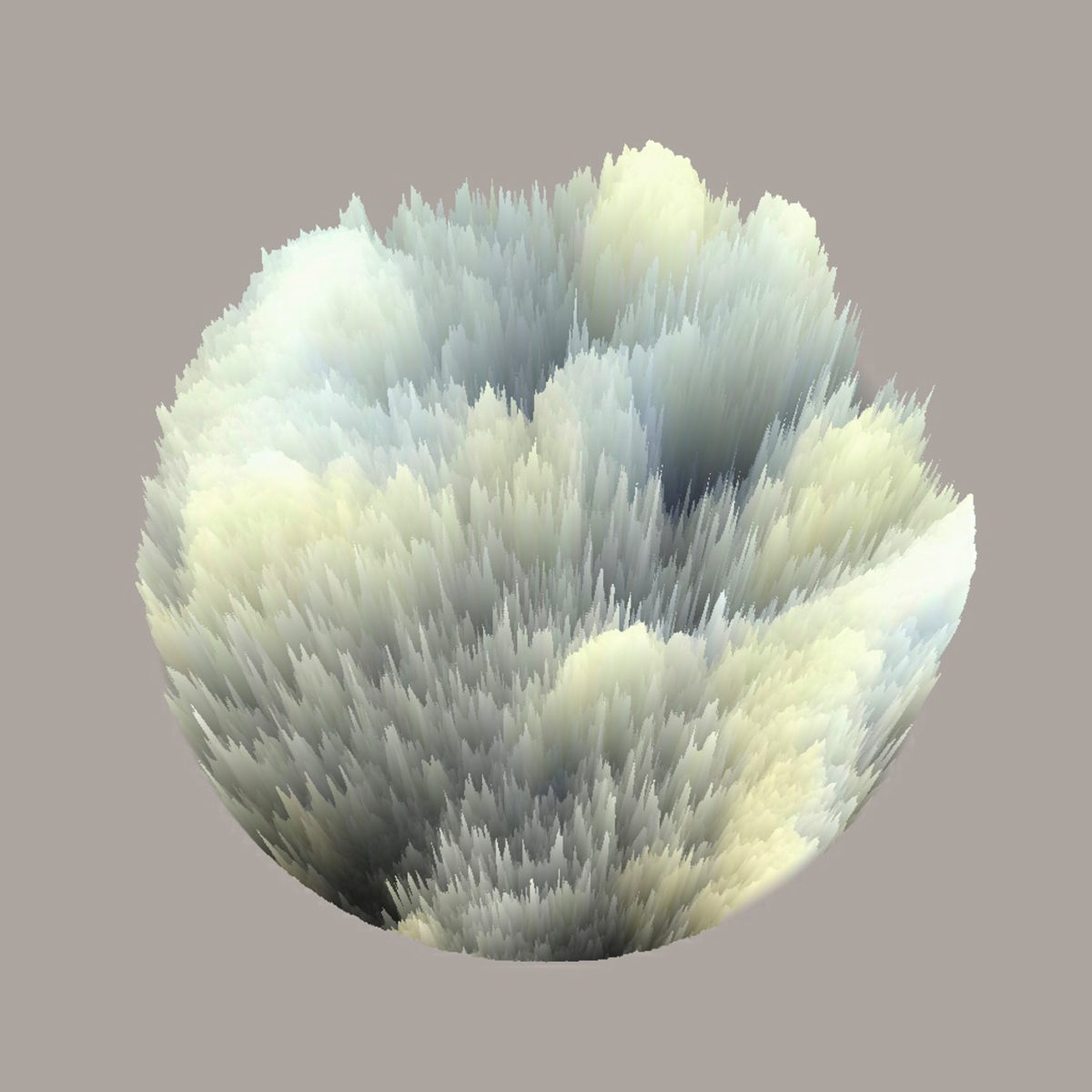

Hon Ngan-ting, Rebecca
J: What are your pursuits in arts?

Digital ink on rice paper | 2020
H: I was trained to be a graphic designer. After graduation, I worked on motion graphics and visual effects (VFX) for a television broadcasting company. I spent ten years in the film and television industry, encountering many constraints in my work. My thirst for creativity was not quenched, and I gradually reached a bottleneck. With a strong desire for self-improvement, I left the industry and studied arts instead.
I originally preferred watercolour as my primary creative medium, and underwent intensive training in Guangzhou. However, watercolour paintings tend to focus on concrete subjects, which do not bode well with me, as I am experimental by nature and treasure diversity. To avoid limitations and allow flexibility in creation, I opted for ink painting in the end.

Digital ink on rice paper | 2020
J: Could you share your learning experiences with various ink masters?
H: I am passionate about learning and constantly seek to improve myself, so I had lessons with various teachers. They are all unique in their own artistry. From traditional to contemporary ink art, not only did I obtain different knowledge from them, but also gained insights into their philosophies towards arts, which have been tremendously beneficial.
J: To you, the appeal of ink painting is…
H: I am fascinated with the effects of diffusing and rendering when ink meets water. My early works are therefore focused more on the visual effects and beauty of ink painting, rather than a specific subject matter or story (same as my approach towards VFX). This is also why I did not pursue Gongbi, which is an arm of traditional Chinese painting that tends to focus on landscapes, flowers and birds.
Ink and colour on rice paper | 2019
Ink and colour on rice paper | 2019
J: How did you come up with the idea of marrying traditional Chinese ink painting and modern digital art? What kind of effect do you wish to achieve?
H: During my admissions interview at CUHK, Professor Tam Wai-ping asked me how ink painting and VFX could be integrated and further developed. This inspired me to consider the possibility and attempt such combination. My background in VFX has also prompted me to pay close attention to the effects of light and shadow. Apart from form and colour, I could employ lighting for story-telling. In Urban Variations No.1, for example, video projection is added on the two-dimensional still painting, setting different tones and layers to it, and so the ambience is altered.
Although some people are dismissive towards digital ink painting, new media generates enormous potential to ink art, and enhances its story-telling ability. I believe that digital ink painting does not only represent modern times, it also reflects and passes on the legacy of traditional ink painting.
J: Tell us more about your upcoming exhibition “Mirage”. How do you present Hong Kong’s social context and urban landscape through your work?
H: From Flower in the city to Urban Variations – concrete to abstract, my recent works revolve around the theme of city. The two series being featured at the exhibition depict the transformation of cityscape from different perspectives. In Urban Variations, cityscape is geometrised with blurry boundaries. They express my thoughts about the modern city in 360-degree bird’s eye view which is different from one-point or scatter-point perspective in traditional ink painting.
Meanwhile, Flower in the city originated from the concept of conservation, based on my observations of the communities, and inspired by the lyrics of Swallowtail Butterfly by local band Shine and my love of growing plants. So I put down buildings and flowers in my paintings – capturing sceneries of Tai Po where I grew up, as well as Shum Shui Po and Shek Kip Mei where my studio is based, together with my plants. If you compare the two, you will notice how our city has transformed from old buildings with distinct characters to monotonous skyscrapers with no room for plants.
In addition to works on paper, I have experimented with other materials. The exhibition will also feature a new semi-stereoscopic work that serves as a transition between the above series, and a narrative of how a concrete city morphs into an abstract state, hoping it will resonate with the audience.
J: Could you share some of your memorable experiences or feelings in the exhibitions and awards that you have participated in?
H: In recent years, I was fortunate enough to have won several awards and sold some of my works. The recognition and positive feedbacks I have received further affirmed my belief that there is room for the development of a genre where ink painting and new media merge.
In April this year, I was involved in curating the joint art exhibition “It should be coming” at JCCAC. In addition to the exhibition, we organised a series of talks, in which scholars from various disciplines had dialogues with the artists. The most memorable one is the talk on art and philosophy between Dr. Ho Siu-kee and Dr. Lee Hong-ting, which was interesting and thought-provoking. I would like to organise similar events in the future if possible, so the public can understand arts from different perspectives.
Hon Ngan-ting, Rebecca
J: Any plans for the future?
H: I wish to incorporate interactive elements in my works and explore immersive art in the future, such that audience and space become the materials of my work, and their interactions play a part in the work’s form and mode of existence. Besides, I would like to establish an association or organisation to organise community art projects.

